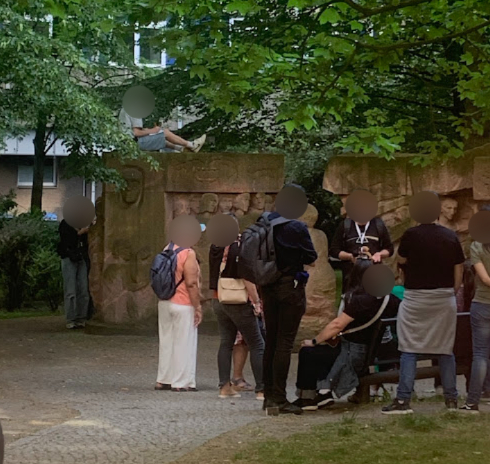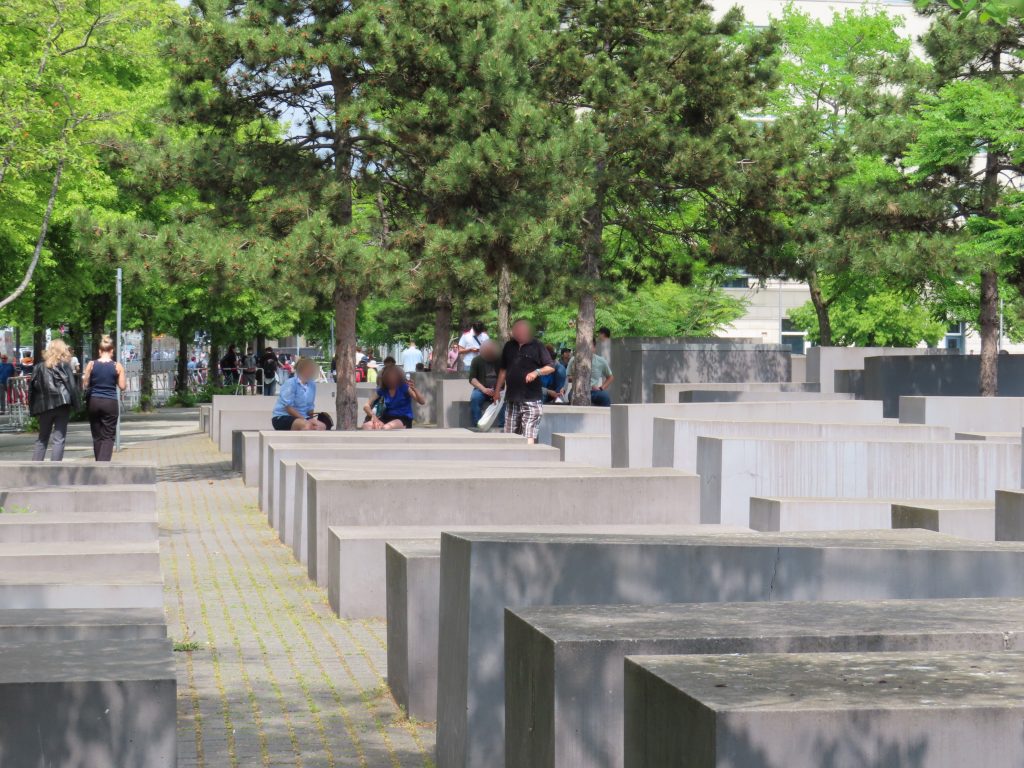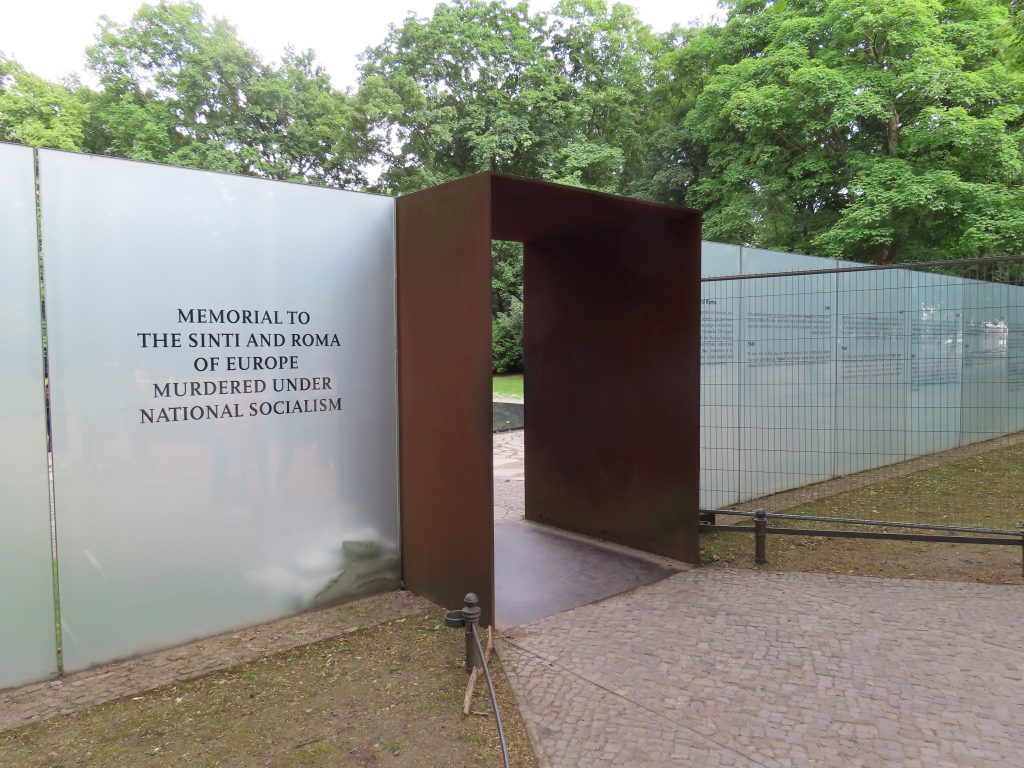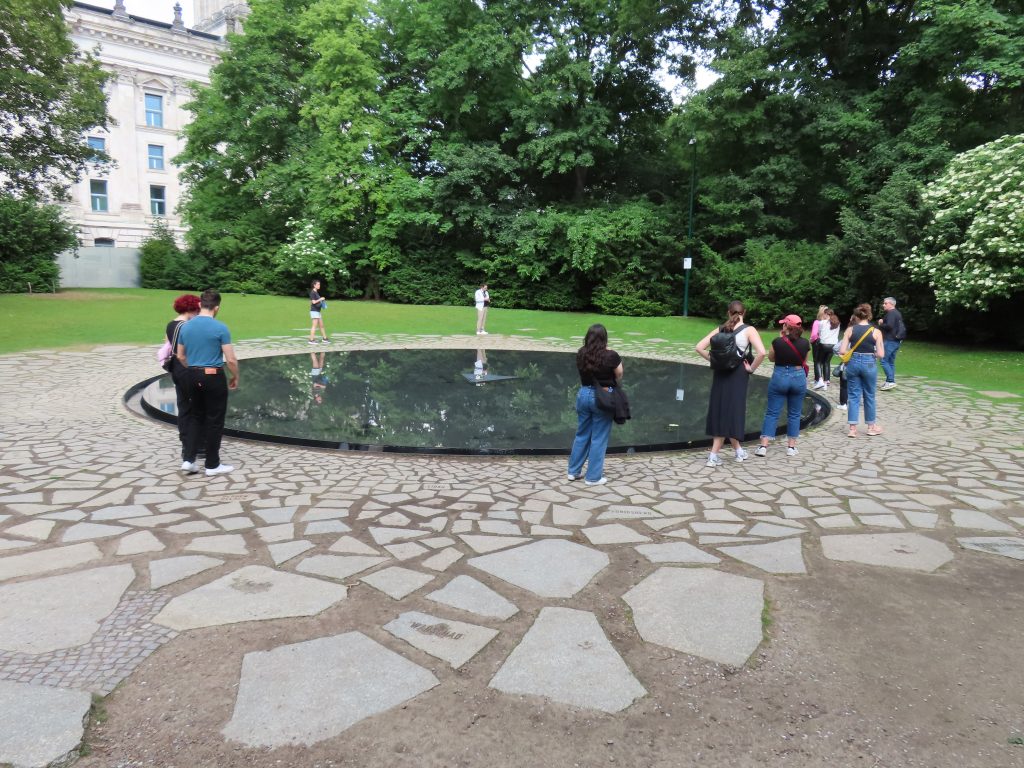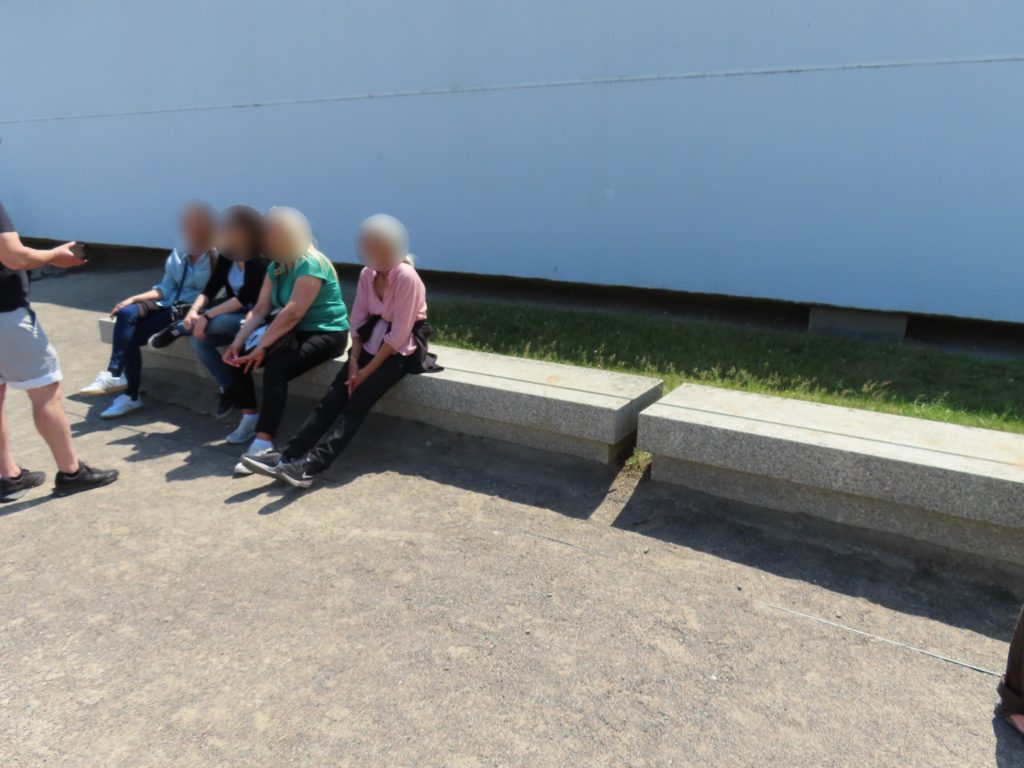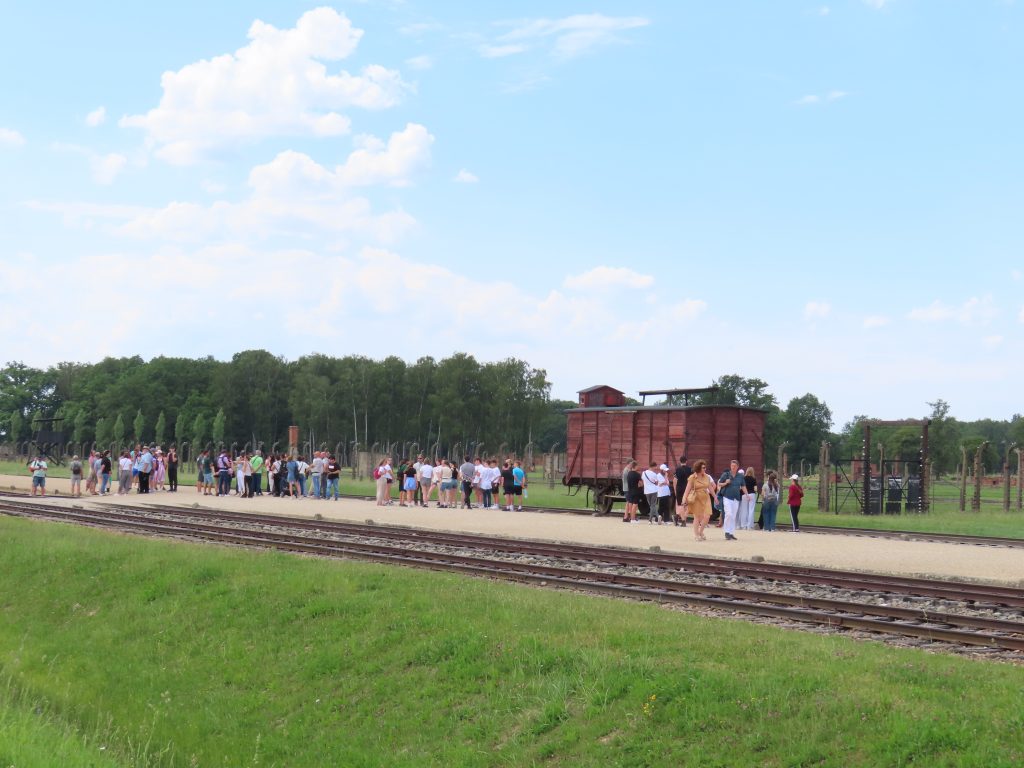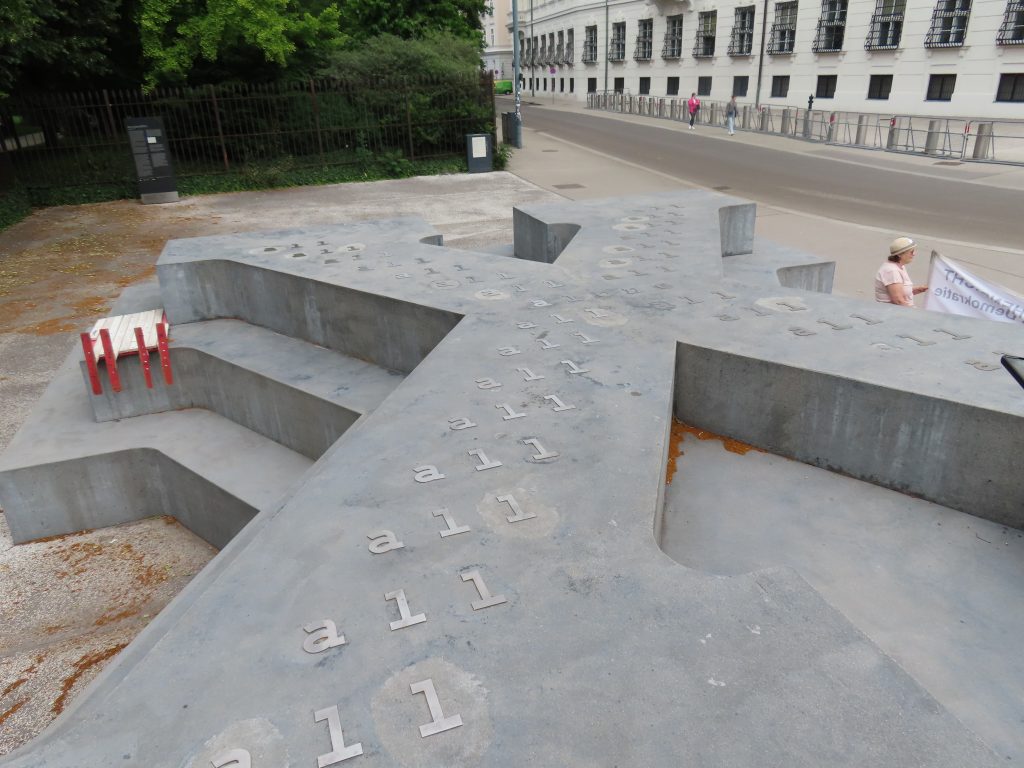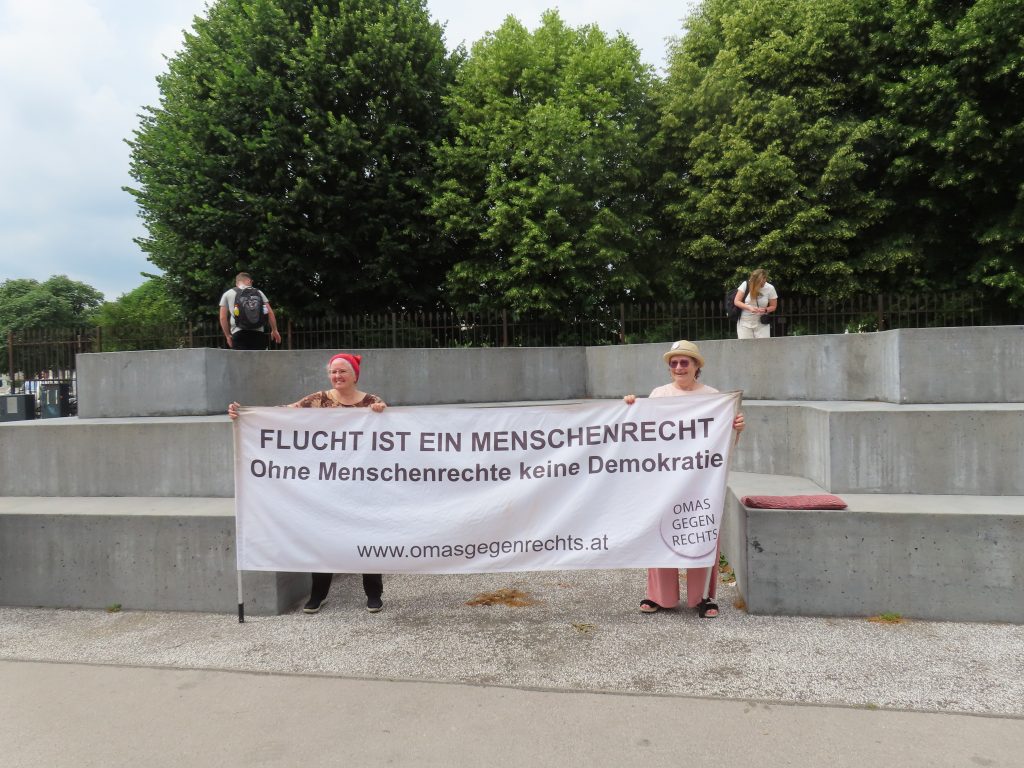How do we decide what is and is not appropriate behaviour when interacting with sites of memory such as the memorial “Trains to Life – Trains to Death,” which tells the story of Jewish children escaping Nazi Germany, and others who were deported to death camps? Who are we, as outside academics, to judge the actions of people we don’t know?
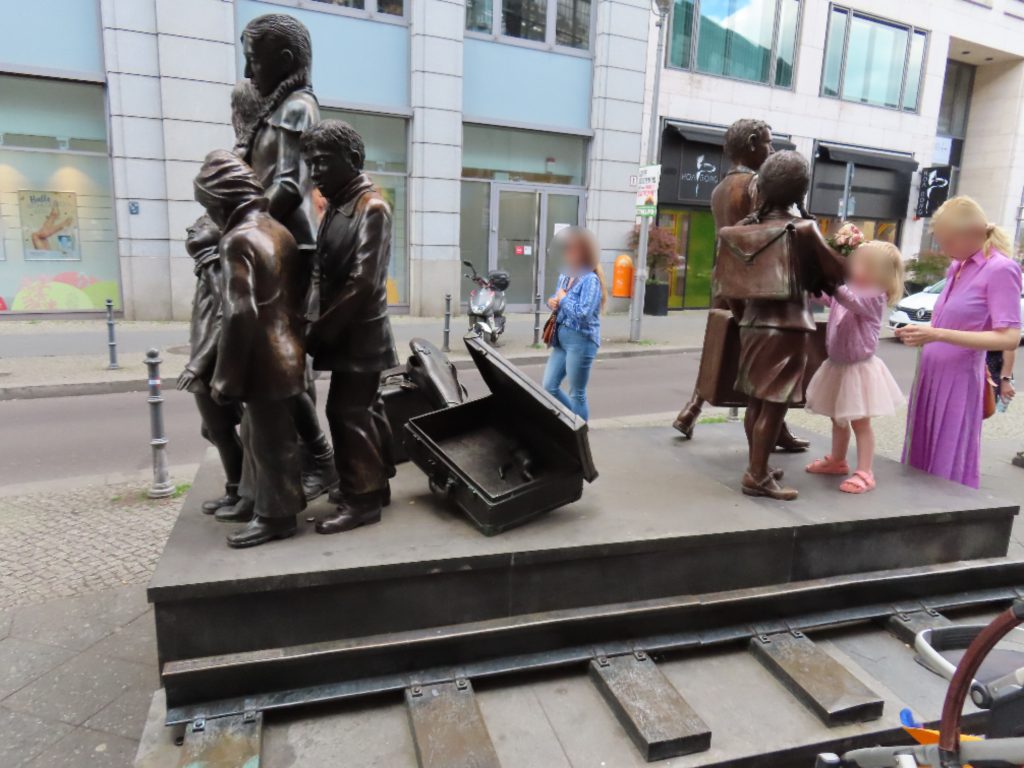

It might appear to some that this child, whose mother is seemingly distracted by something on her phone, is acting inappropriately. Or is it the mother at fault for not watching over her child’s actions? Or is this an innocent example of a child exploring the world around them, a world which includes these memorials so widely across the landscape of the city. What is it like to grow up surrounded by these haunted memories of atrocities done to the children of the past? Do these memorials become just another facet of the architecture of a modern city that people grow complacent toward?
Do memorials exist in an abstract space where people are not allowed to interact with them? Or are memorials meant to be interacted with, touched, vandalised and left to decay over time, like the memory of the event they symbolise? We can, as academics, discuss memorials all we want in our classrooms thousands of miles away and years removed from these places of memory. Still, it is not until one is in these spaces seeing it with one’s own eyes that our preconceived ideas and theories get thrown out the window and the reality of a complicated world replaces it.
